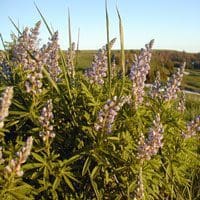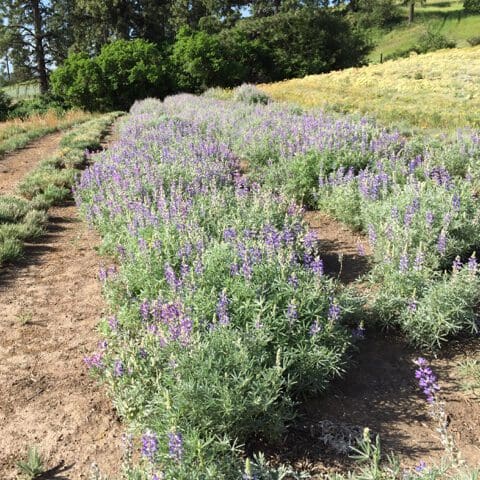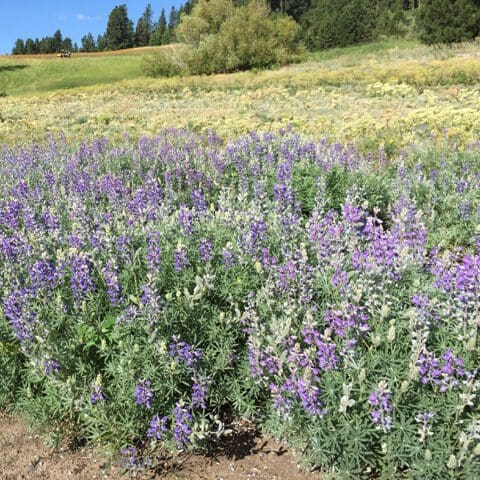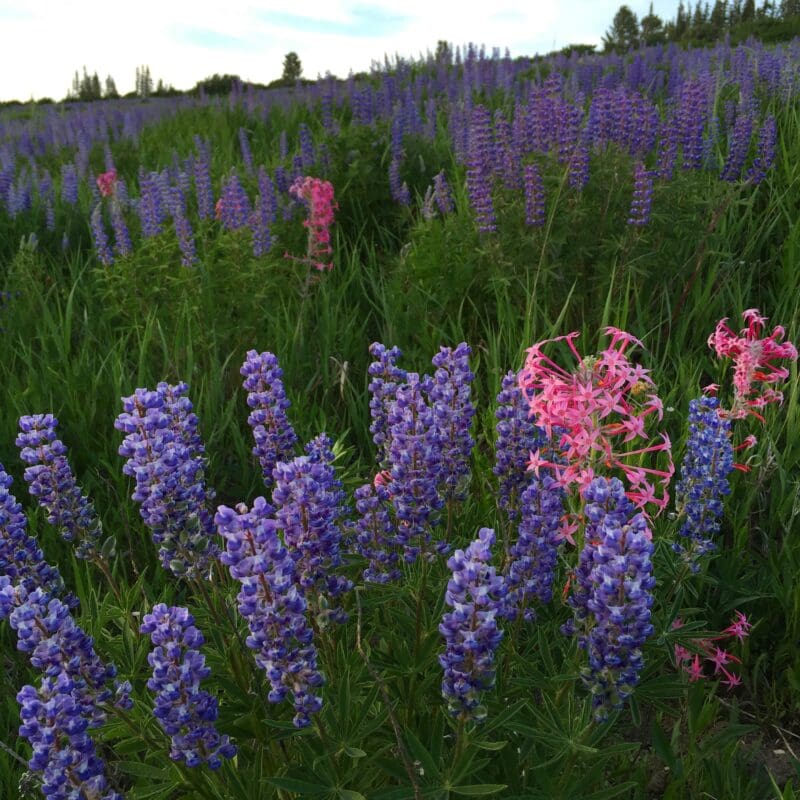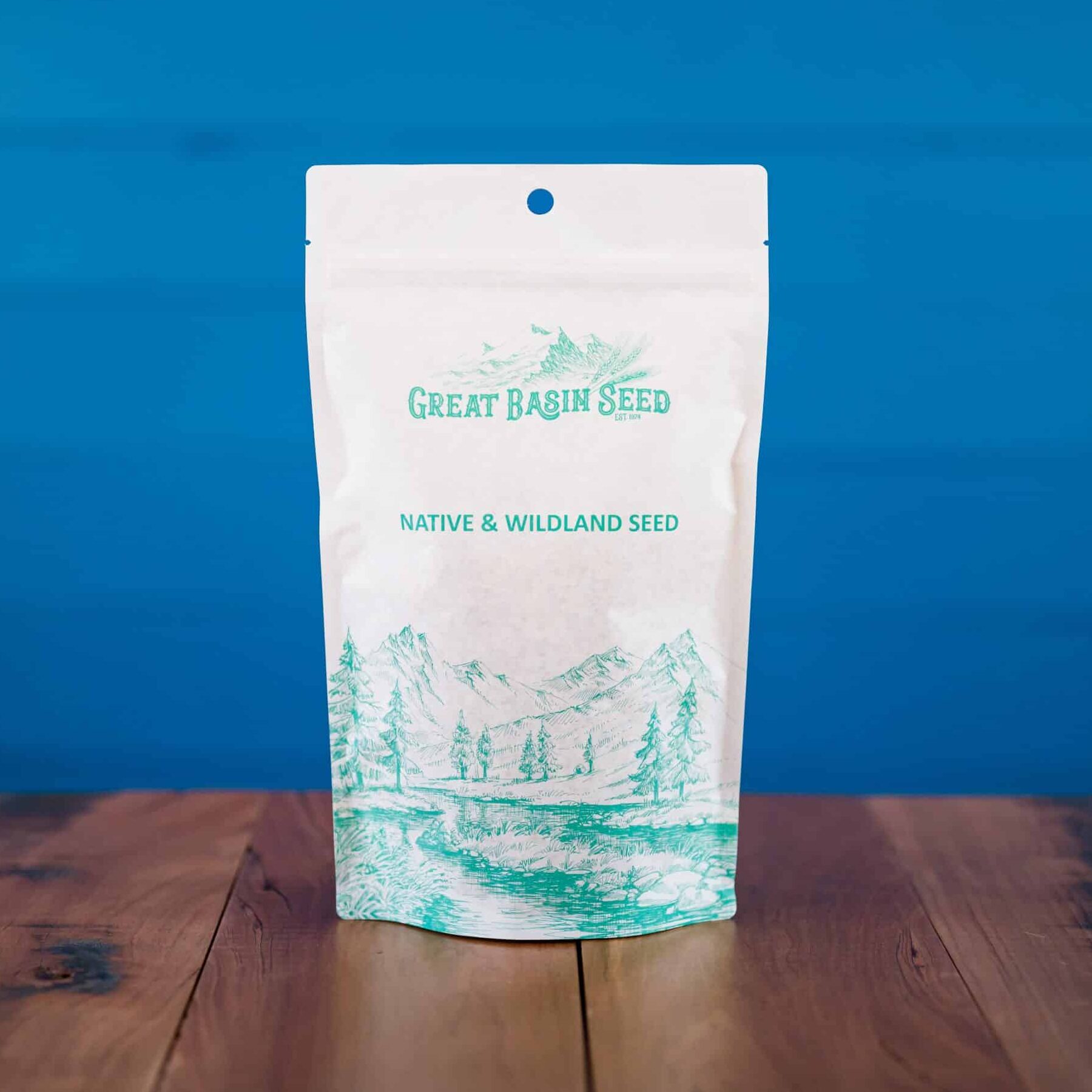


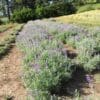
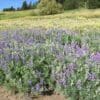
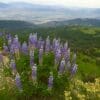




Silky Lupine
 $18.50 – $148.00
$18.50 – $148.00 - A beautiful, frequently planted native wildflower
- Hardy and long-lived
- Excellent at fixing nitrogen
- Colonize disturbed, low fertility soils
- Important pollen source for bumble bees
- Nectar source for honey bees and hummingbirds
- Poisonous to cattle and sheep during gestation
Silky Lupine (Lupinus sericeus) is a native, perennial, cool season legume. It is adapted to mountains and foothills all over the western United States. It is important for wildlife habitat and reclamation mixes. It can grow to be 3 feet tall in places with a minimum of 10 inches of precipitation.
Silky lupine is found in grasslands, sagebrush, mountain brush plant communities and in aspen and coniferous forests. Silky lupine is commonly found in association with sedges, prairie junegrass, Idaho Fescue, Sandberg Bluegrass, Bluebunch Wheatgrass, Serviceberry, mountain mahogany, Arrowleaf Balsamroot, and western yarrow.
Silky lupine is adapted to a broad range of soil textures but found most commonly on coarse textured and well drained. It is non-saline soils. It is found in areas receiving 10-18+ inches of annual precipitation and at elevations ranging from 820 feet in the Columbia Basin of Washington to 10,000 feet in Utah. It prefers full sun but will tolerate partial shade. It grows in soils with pH 7-7.5.
Uses
Silky lupine is consumed by white-tailed deer, bighorn sheep, upland game birds, small nongame birds and small mammals. Livestock will utilize the plant but it is poisonous to cattle and sheep. Palatability is rated poor to fair for cattle and horses and fair for sheep. It is rated poor in terms of nutritional value. Silky lupine provides fair to good cover for small mammals and birds. Its ability to fix nitrogen allows it to colonize disturbed, low fertility soils but is rated low to medium for control of soil erosion and for long term revegetation. It has some value for restoration of disturbed areas.
Hummingbirds are attracted to silky lupine and the plant is recognized by pollination ecologists as attracting large numbers of native bees. It is an important pollen source for bumble bees and a nectar source for honey bees.
Management
This plant is highly toxic when first growing. It is still poisonous to cattle and sheep when full grown and is best to limit livestock from ranging in areas with were silky lupine is common. Sheep are frequently poisoned by feeding on lupine. Signs of poisoned sheep include nervousness, excessive salivation, lethargy, difficulty breathing, convulsions, coma, and death. Poisoning usually occurs when hungry animals are allowed to graze lupine. Cattle grazing lupine between the 40th and 100th days of gestation often give birth to calves with crooked legs and other congenital deformities. Consumed hay containing lupine has also caused death of sheep and cattle. The amount of lupine that will kill an animal varies with the stage of plant growth. Cattle may be poisoned by consuming 1-12 pounds of lupine without other forage.
Poisoning can be reduced by keeping hungry animals away from lupines during the early growth stage, in late summer when the plant is in the highly toxic seed stage, and from dense stands at all times. Keeping cows away from lupine during the 40th to 100th days of gestation will prevent most deformities. There is no known treatment for lupine poisoning.
Because of its toxic qualities to domestic livestock, stock growers may consider silky lupine to be a weed where it is prevalent and interferes with livestock grazing.
***Click on the “Quick Plant Facts” tab above for more information.
Silky Lupine NRCS Plant Guide
Silky Lupine NRCS Plant Guide
PDF version of NRCS Plant Guide & Fact Sheet
Prepared By: Loren St. John, USDA NRCS Plant Materials Center, Aberdeen, ID
Derek Tilley, USDA NRCS Plant Materials Center,
Aberdeen, ID
Helpful Links
Additional information about this product can be found on the academic websites linked below.
Synonyms
Many plants have more than one common and scientific name. We've listed a few of them below.
- Silky Lupine
- Lupinus
Who is Great Basin Seed?
Great Basin Seed is a seed company that specializes in seed sales and consultation for home, ranch, farm, range and reclamation. We have been a leader in the seed industry since 1974.
Our History
We've been in the seed business since 1974.
What We Offer
We offer seed for home, farm, ranch, range and reclamation projects.
Meet the Gang
We have the best employees in the world! We are proud of the work they do, and trust them to serve you!
Right: Company founder Lloyd and his wife Paula Stevens in a wildflower seed production field circa 1977
Quick Plant Facts
| Common Name: | Silky Lupine |
|---|---|
| Scientific Name: | |
| Origin: | |
| Plant Type: | |
| Lifespan: | |
| Min. Precipitation: | |
| Seeds per Pound: | |
| Growth Height: | |
| Best Time to Sow: | |
| Planting Rate: | |
| Max Sowing Depth: | |
| Root Form: | |
| Growth Season: | |
| Sun & Shade Tolerance: | Full Sun to Partial Shade |
| Elevation of Occurance: | |
| pH Tolerance: | |
| Hardiness Zones: | |
| Select a Package Size and Quantity | 1 oz. Envelope, 4 oz. Pouch (0.25 lbs.), 8 oz. Pouch (0.50 lbs.), 1 lb. (by the pound) |


